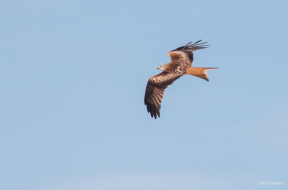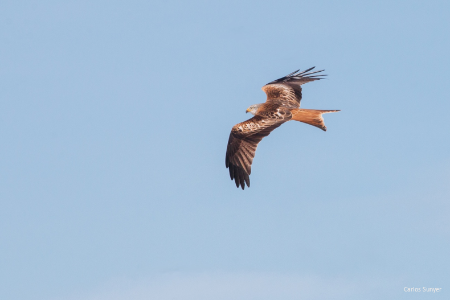Poisoning as a determining factor in the decline of the red kite
The research detects a direct relationship between the mortality of individuals from poisoning and the reduced breeding population, and even local extinction, of a threatened vertebrate
Research carried out by the universities of Oviedo, Autónoma de Madrid and the Institute for Research on Hunting Resources (IREC), in collaboration with the NGOs WWF-Spain and SEO/BirdLife, shows a direct relationship between the decline of red kite (Milvus milvus) breeding pairs registered in the national censuses of the species carried out in Spain over the last 20 years and the poisoning of fauna compiled in official statistics in the same period.
A multitude of toxic substances, from illegally-used poisons to legally-used pesticides, to veterinary drugs or metals such as lead from hunting ammunition, pose a major threat to biodiversity. These toxic compounds kill thousands of specimens of various wildlife species every year. In fact, the International Nature Conservation Union (IUCN), considers poisoning one of the main threats to more than 2,600 animal species worldwide, including more than 240 species of birds of prey and carnivores.
Several examples illustrate the risk posed by toxic substances to wildlife, from the decline of falcons and other birds of prey in the 1950s related to pesticides such as DDT and cyclodiene, to the most recent collapse of vultures in Asia, consuming the carrion from animals treated with the veterinary compound diclofenac. However, despite the paradigm of these cases, the relationship between the intoxication of individuals and the decline of their populations has generally been established by combining intoxication data, collected in the field, with modelling and other indirect methods to infer changes in the population. The difficulty of obtaining data in the field about the situation of the populations and, above all, on the mortality of individuals and their causes (especially in the case of illegal activities), greatly limits more direct relationships from being established. In other words, that they coincide on a finer scale in space and time, between the mortality of individuals from non-natural causes and the decline of their populations, particularly over large areas.
The work, published in The Proceedings of the National Academy of Sciences (PNAS), the official journal of the US National Academy of Sciences, demonstrates how the increase in poisoning of red kites in each location (10 x 10 km grids) decreases the species reproductive population and increases the risk of local extinction; Also highlighting the potential of the species as a sentinel for the impact of toxic compounds on biodiversity. The research also highlights the role of dogs as indicators of illegal wildlife poisoning. In fact, in the places where there was a greater number of poisoned dogs, a greater decline in the breeding population of red kites was observed, and the probability of the species disappearing was also greater.
The work used the records of 1,075 kites suspected of being poisoned, of which more than 50% were confirmed intoxicated with aldicarb and carbofuran, compounds whose use is currently prohibited in the European Union. These results highlight the great importance of the fight against poisoning — especially illegal, but also with compounds for legal use, such as rodenticides, detected in some of the animals analysed — in the conservation of a species such as the red kite, classified as "Endangered" in Spain. The research also represents an advance in demonstrating the direct relationship between the non-natural mortality of fauna and the decline in populations of the affected species, which up until now had only been demonstrated using inferences or modelling, valid and relevant, although indirect, methods.
Demonstrating the existence of a direct relationship between the poisoning of specimens of a species and the decrease in their populations in the field can help to regulate the use of toxic compounds, which often ends in litigation, for which providing evidence in this direct relationship is essential. In this sense, the team signing the work highlights the potential of the data collected periodically and systematically in the field through censuses based on the work of volunteers and NGOs as well as data compiled from official sources, when analysing the impact of the compounds toxic in wildlife species populations.
Complete reference of the work
Mateo-Tomás, P., Olea, P.P., Mínguez, E., Mateo, R., Viñuela, J. Direct evidence of poison-driven widespread population decline in a wild vertebrate. The Proceedings of the National Academy of Sciences (PNAS).
Images gallery




